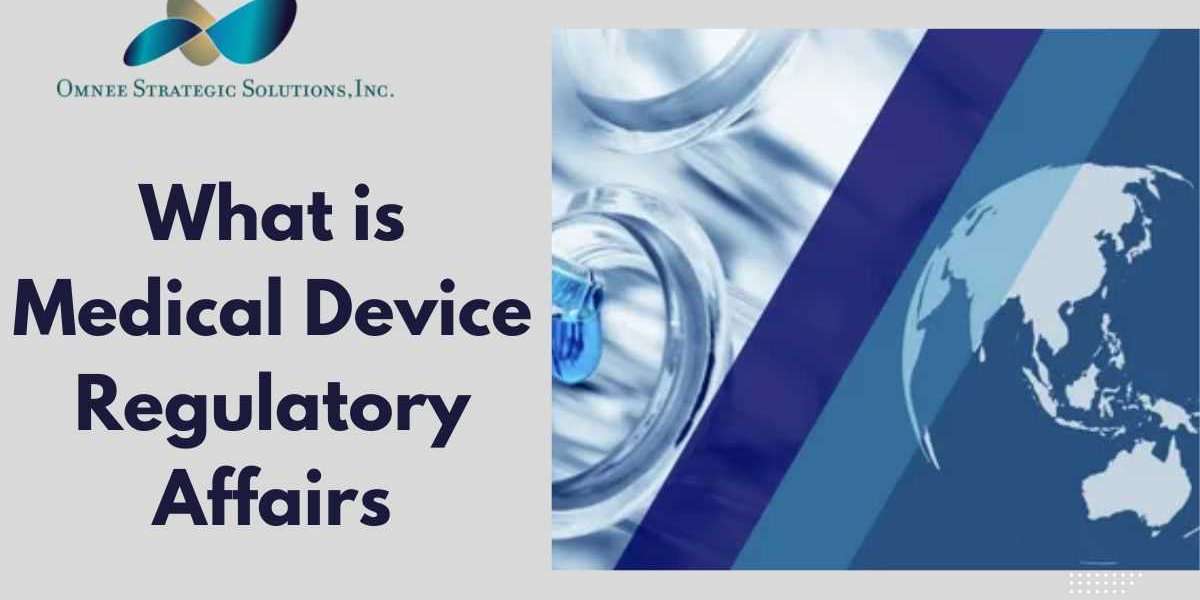Medical devices are integral to modern healthcare, aiding in the diagnosis, monitoring, and treatment of various health conditions. However, the journey of bringing a medical device from concept to the market is complex and regulated. This is where Medical Device Regulatory Affairs comes into play. In this blog, we will explore what Medical Device Regulatory Affairs entails, why it is crucial, and how it impacts the medical device industry.
Understanding Medical Device Regulatory Affairs
Medical Device Regulatory Affairs is a field that focuses on ensuring that medical devices comply with all the necessary regulations and standards before they can be marketed and used. This involves navigating a complex landscape of laws and guidelines that vary by country and region. Regulatory professionals in this field work to ensure that medical devices meet safety, efficacy, and quality standards set by regulatory bodies.
Key Responsibilities in Medical Device Regulatory Affairs
Professionals in Medical Device Regulatory Affairs have several key responsibilities, including:
Regulatory Submissions: Preparing and submitting regulatory documents required for the approval of medical devices. This includes compiling clinical data, manufacturing information, and labeling details.
Compliance Management: Ensuring that all aspects of a medical device’s development, manufacturing, and marketing comply with relevant regulations and standards. This involves regular audits and reviews.
Liaison with Regulatory Authorities: Acting as the main point of contact between the medical device company and regulatory agencies. This includes responding to queries, providing updates, and negotiating approvals.
Regulatory Strategy Development: Developing strategies to meet regulatory requirements effectively and efficiently. This includes planning for regulatory submissions and addressing potential challenges.
Market Surveillance: Monitoring the device’s performance once it is on the market to ensure continued compliance and address any issues that arise.
Importance of Medical Device Regulatory Affairs
Medical Device Regulatory Affairs plays a crucial role in the healthcare industry. Here’s why it is so important:
Ensuring Safety and Efficacy: Regulatory affairs professionals ensure that medical devices are safe for use and perform as intended. This protects patients from potential harm and ensures that the devices provide the benefits they claim to offer.
Facilitating Market Access: By ensuring that devices meet all regulatory requirements, regulatory affairs professionals help companies gain market access in different regions. This is essential for companies looking to expand their reach and serve a global market.
Maintaining Quality Standards: Compliance with regulatory standards helps maintain high quality in medical devices. This includes ensuring that manufacturing processes are consistent and that devices are produced according to specified requirements.
Navigating Regulatory Changes: The regulatory landscape for medical devices is constantly evolving. Regulatory affairs professionals stay updated on changes and help companies adapt to new requirements, ensuring ongoing compliance.
Key Regulations and Standards
Several regulations and standards govern the medical device industry. Some of the key ones include:
FDA Regulations (U.S.): In the United States, the Food and Drug Administration (FDA) regulates medical devices. The FDA’s Center for Devices and Radiological Health (CDRH) oversees device approval and monitoring.
European Union Regulations: The European Union has its own set of regulations for medical devices, known as the Medical Device Regulation (MDR) and In-vitro Diagnostic Regulation (IVDR). These regulations ensure that devices meet stringent safety and performance criteria before they can be sold in the EU.
ISO Standards: The International Organization for Standardization (ISO) provides guidelines and standards that cover various aspects of medical device manufacturing and quality management. For example, ISO 13485 outlines requirements for quality management systems specific to medical devices.
Other Regional Regulations: Different countries and regions may have their own regulatory requirements. It is essential for companies to be aware of and comply with these regulations when entering new markets.
The Role of Medical Device Regulatory Affairs in Product Development
Medical Device Regulatory Affairs is involved throughout the product development lifecycle, from initial concept to post-market activities. Here’s how it integrates into each stage:
Early Development: During the early stages of development, regulatory affairs professionals help define the regulatory pathway and identify potential hurdles. This includes assessing the necessary regulatory requirements and planning for submissions.
Clinical Trials: Regulatory affairs professionals ensure that clinical trials are conducted in compliance with regulations. This includes preparing and submitting Investigational Device Exemption (IDE) applications and managing interactions with regulatory agencies.
Approval Process: When seeking regulatory approval, professionals compile and submit comprehensive documentation, including clinical trial data, safety information, and manufacturing details. They work closely with regulatory authorities to address any concerns and secure approval.
Manufacturing and Quality Control: Regulatory affairs professionals ensure that manufacturing processes meet regulatory standards and that quality control measures are in place. This helps maintain device quality and compliance throughout production.
Post-Market Surveillance: After a device is on the market, regulatory affairs professionals monitor its performance and address any issues that arise. This includes managing adverse event reports and ensuring continued compliance with regulatory requirements.
Challenges in Medical Device Regulatory Affairs
While Medical Device Regulatory Affairs is crucial, it also presents several challenges:
Regulatory Complexity: Navigating the complex and often varying regulations across different regions can be challenging. Regulatory affairs professionals must stay informed about changes and ensure compliance in multiple jurisdictions.
Documentation Requirements: Preparing and managing the extensive documentation required for regulatory submissions can be time-consuming and complex. Accurate and thorough documentation is essential for approval.
Regulatory Changes: The regulatory landscape for medical devices is constantly evolving. Keeping up with changes and adapting to new requirements can be challenging for companies and regulatory professionals.
Global Market Entry: Entering new markets requires understanding and complying with local regulations. This can involve additional regulatory submissions and adaptations to meet specific regional requirements.
The Future of Medical Device Regulatory Affairs
As technology advances and new medical devices are developed, the field of Medical Device Regulatory Affairs will continue to evolve. Key trends and developments include:
Increased Focus on Digital Health: With the rise of digital health technologies, regulatory affairs professionals will need to address new challenges related to software, cybersecurity, and data privacy.
Global Harmonization: Efforts to harmonize regulatory requirements across different regions may simplify the approval process and facilitate market access for medical device companies.
Emphasis on Patient-Centricity: There is a growing emphasis on patient safety and user experience. Regulatory affairs professionals will need to ensure that devices meet these expectations while complying with regulations.
Innovation and Regulation: Balancing innovation with regulatory requirements will remain a key focus. Regulatory affairs professionals will play a crucial role in supporting the development of new and innovative medical devices while ensuring safety and compliance.
Conclusion
Medical Device Regulatory Affairs is a critical field that ensures medical devices meet all necessary regulations and standards before reaching the market. It involves a wide range of responsibilities, from regulatory submissions to compliance management and post-market surveillance. As the medical device industry continues to evolve, the role of regulatory affairs professionals will be vital in navigating complex regulations and supporting the development of safe and effective medical devices. Understanding and effectively managing Medical Device Regulatory Affairs is essential for success in the global healthcare market.








